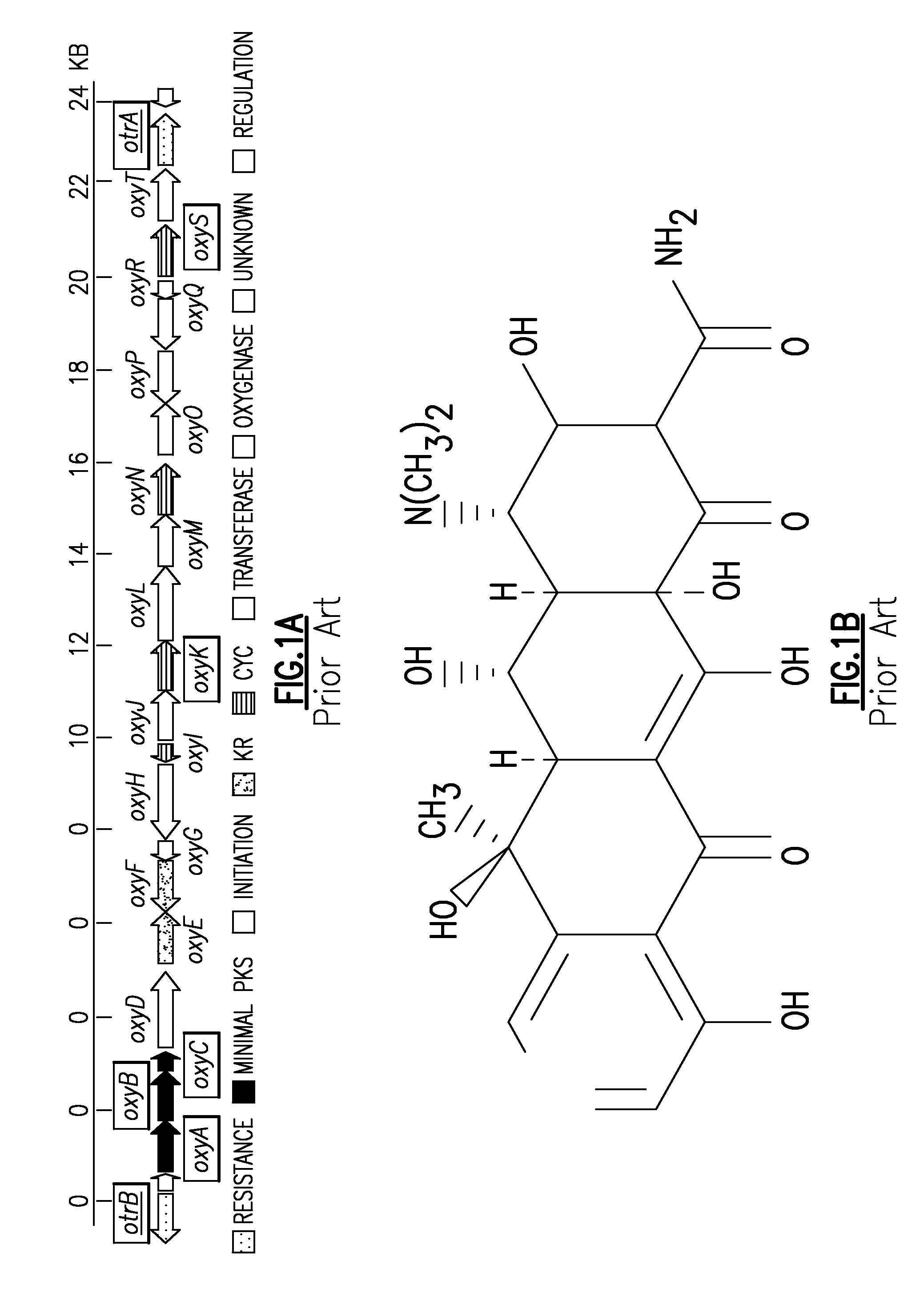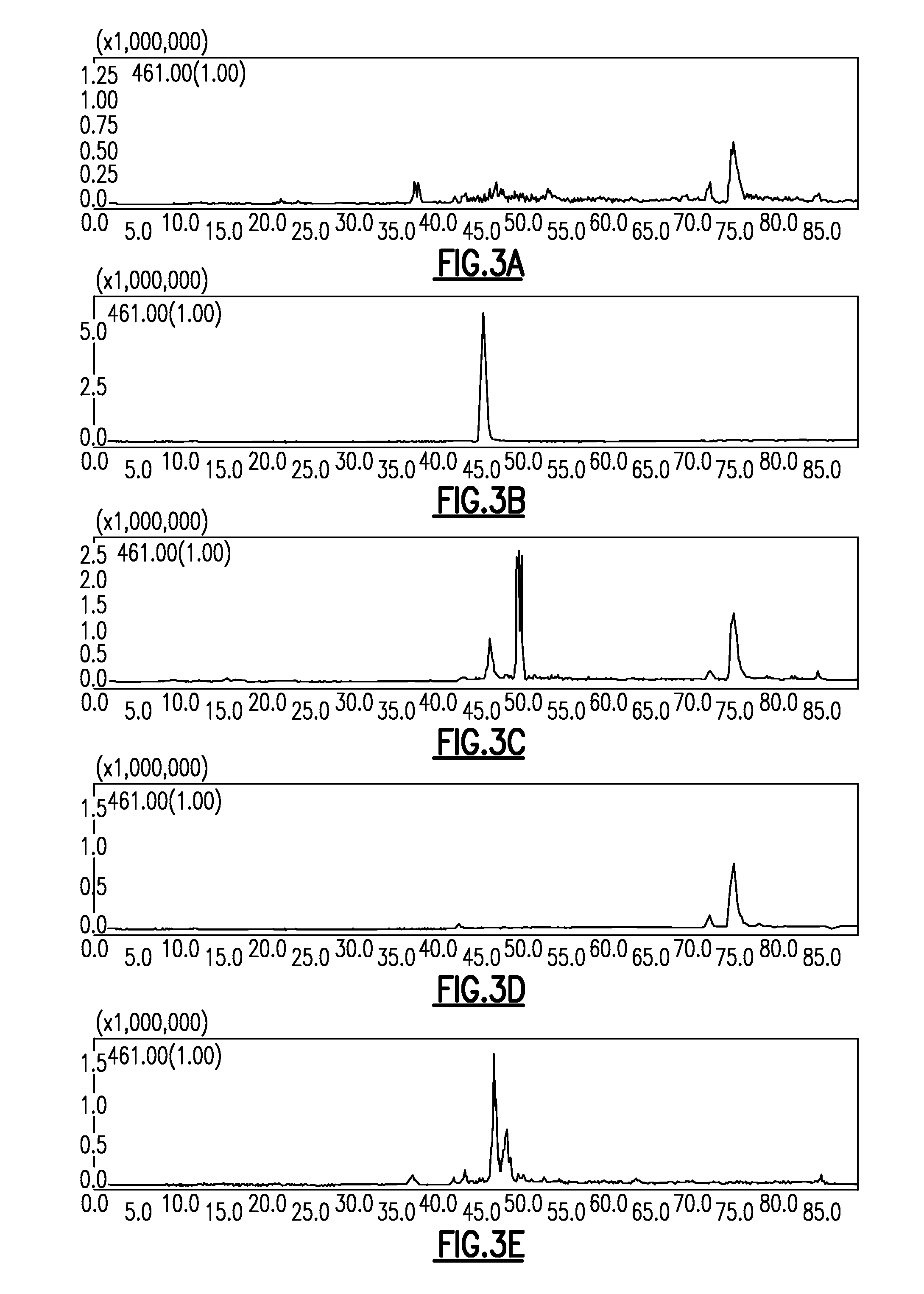System and Method For the Heterologous Expression of Polyketide Synthase Gene Clusters
a polyketide synthase and heterologous expression technology, applied in the field of polyketide synthase, can solve the problems of insufficient m, insufficient m, and inability to detect new bioactive polyketides, and achieve the effects of facilitating the production of oxytetracycline, reducing the risk of m, and ensuring the ability of the m
- Summary
- Abstract
- Description
- Claims
- Application Information
AI Technical Summary
Benefits of technology
Problems solved by technology
Method used
Image
Examples
example 1
[0039]There is seen in FIG. 2A a pMRH08 with the oxytertracycline gene cluster from S. rimosus and, in FIG. 2B, pDCS02 with the rpoN gene from M. xanthus. Production of oxytetracycline from M. xanthus via homologous recombination demonstrates the ability of the non-native promoters from M. xanthus to recognize and initiate gene transcription of the oxytetracycline PKS from S. rimosus. The present may be used, among things, is connection with Myxococcus xanthus rpoN gene (SEQ ID No. 1), the Escherichia coli rpoN gene (SEQ ID No. 2), and the Pseudomonas putida rpoN gene (SEQ ID No. 3).
[0040]Production of oxytetracycline from M. xanthus strain DK1622 was observed using the pET28a expression vector, the 21 kb oxytetracycline biosynthetic pathway and the A-signal factor asgE from M. xanthus (pMRH08) (see FIG. 3A through 3C). The asgE region allows for homologous recombination of the oxytetracycline biosynthetic pathway into the chromosome of M. xanthus 22. Transformation of M. xanthus wi...
example 2
[0041]If the M. xanthus σ54 system is responsible for driving expression of the oxytetracycline gene cluster in M. xanthus, as discussed in Example 1, than expression of the M xanthus σ54 factor in E. coli should also drive expression of the oxytetracyline gene cluster. Accordingly, M. xanthus rpoN was cloned into a pET21 based expression plasmid, generating pDCS02. Plasmid DCS02 was developed using the pET21c expression vector with the rpoN gene amplified from M. xanthus inserted into the vector under an inducible T7 promoter. Plasmid DCS02 allows the expression of σ54 promoters using heterologous expression. The relevant portion of the sequence of the σ54 promoter is TGGCACGNNNNTTGCW (SEQ ID No. 4), where N is any nucleotide and W represents A or T.
[0042]E. coli strain BL21 (DE3) was also transformed with the oxytetracycline gene cluster (pMRH08). This system severed as a negative control since the strain BL21(DE3) cannot post-translationally modify PKS proteins. E. coli strain BA...
example 3
[0052]For the purposes of testing the present invention, Myxococcus xanthus strain DKI622 was used, and E. coli XLI-Blue was used for cloning purposes. E. coli BL21(DE3) was used as a negative control for expression of secondary metabolites due to its inability to post translationally modify PKS ACP domains. The present invention also used an E. coli strain BAPI containing the sfp gene from Bacillus subtillis allowing post-translational modification of PKS ACP domains and to generate functional PKS was used for oxytetracycline expression studies.
[0053]Cloning of pMRH08 was performed using pTY264 containing the oxytetracycline gene cluster provided by Yi Tang of the Department of Chemical and Biomolecular Engineering, University of California, Los Angeles. Plasmids were purified using the Wizard Plus SV Miniprep Kit, available from Promega. The asgE fragment was amplified from M. xanthus strain DKI622 using the following primers:
(SEQ ID No. 5)(forward)5′-GACGAGATCTGTTGGAAGGTCGGCAACTG...
PUM
| Property | Measurement | Unit |
|---|---|---|
| pH | aaaaa | aaaaa |
| pH | aaaaa | aaaaa |
| concentration | aaaaa | aaaaa |
Abstract
Description
Claims
Application Information
 Login to View More
Login to View More - R&D
- Intellectual Property
- Life Sciences
- Materials
- Tech Scout
- Unparalleled Data Quality
- Higher Quality Content
- 60% Fewer Hallucinations
Browse by: Latest US Patents, China's latest patents, Technical Efficacy Thesaurus, Application Domain, Technology Topic, Popular Technical Reports.
© 2025 PatSnap. All rights reserved.Legal|Privacy policy|Modern Slavery Act Transparency Statement|Sitemap|About US| Contact US: help@patsnap.com



